| View previous topic :: View next topic |
| Author |
Message |
Scheimpflug


Joined: 06 Feb 2010
Posts: 1888
Location: New Zealand / USA
Expire: 2011-11-18
|
 Posted: Tue Jul 13, 2010 11:35 am Post subject: 1880s Brass: Taylor, Taylor & Hobson - Rapid Rectilinear Posted: Tue Jul 13, 2010 11:35 am Post subject: 1880s Brass: Taylor, Taylor & Hobson - Rapid Rectilinear |
 |
|
Scheimpflug wrote:
Lightning strikes twice? 
Just a month after finding my 1940's era large-format Dallmeyer with the homemade brass M42 adapter (thread here), I have come across another vintage homebrew monster. 
My latest treasure is a brass lens made by Taylor, Taylor & Hobson in Leicester, England. It is marked "R.R.", designating it as a Rapid Rectilinear design, and the engravings specify "8 1/2 x 6 1/2" and "EQ. FOC. 11.31 IN." It also has the word "PATENT" and a small upward arrow engraved through the center of the word, but there is no reference to a patent number. The glass is fungus free.
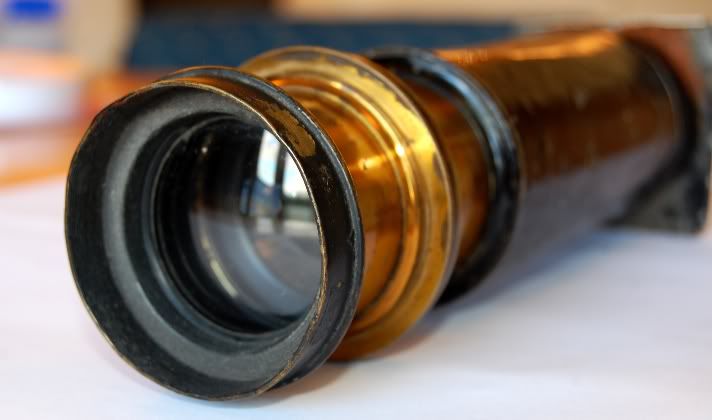
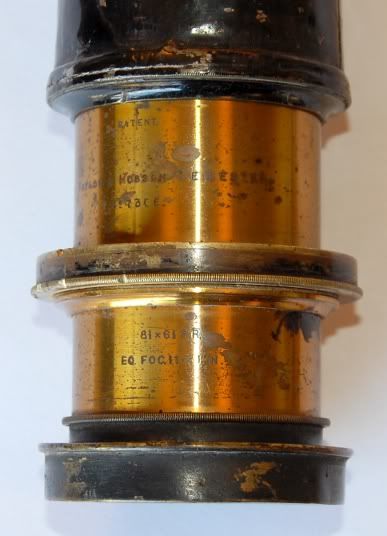
The interesting part of this particular lens is that it has a long thin metal tube soldered to it.. right over the rear threads.  The tube has a square plate on the end, with a small strip soldered to one end at a right angle, and a gentle bend (towards the lens) on the opposite side. There is a ridged flange where the tube meets the plate, so I suspect that only the tube portion is homemade - perhaps just an extension? The ends and joints of the tube are nicely rolled, so I would guess that it was a production can (food or some other product) that had the ends cut out. The tube has a square plate on the end, with a small strip soldered to one end at a right angle, and a gentle bend (towards the lens) on the opposite side. There is a ridged flange where the tube meets the plate, so I suspect that only the tube portion is homemade - perhaps just an extension? The ends and joints of the tube are nicely rolled, so I would guess that it was a production can (food or some other product) that had the ends cut out.
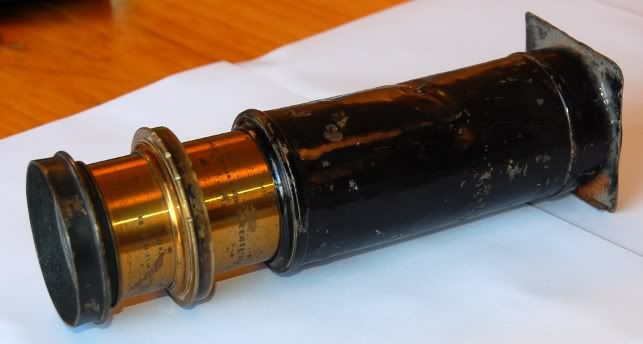
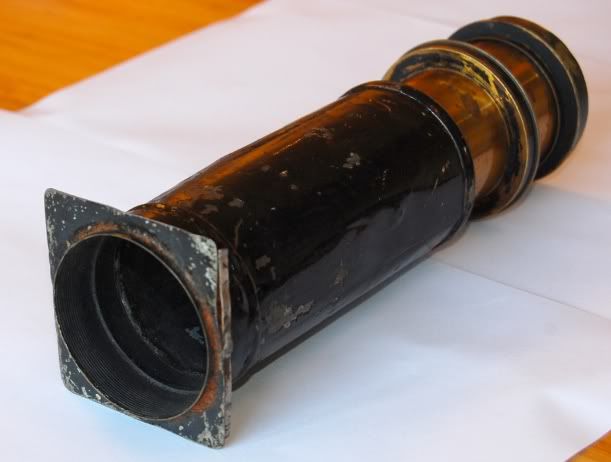
I had to disassemble the lens to fix the aperture mechanism, which turned out to be as simple as adjusting the retaining collar so that the aperture ring engaged the pin that operated the iris diaphragm. The lens opened easily, so I took it apart a bit more than I needed to, but I didn't press my luck to take it fully apart.  The aperture is stepless, but has markings for f/8, 11, 16, 22, 32, 45, and 64. Only f/8 is marked with the "f/" notation, and only f/8 through 32 have notches filed in the aperture ring. The front filter threads are 43mm or 1 11/16", and this lens came with a very short brass lens hood, so I would assume that the field of view is pretty wide. The aperture is stepless, but has markings for f/8, 11, 16, 22, 32, 45, and 64. Only f/8 is marked with the "f/" notation, and only f/8 through 32 have notches filed in the aperture ring. The front filter threads are 43mm or 1 11/16", and this lens came with a very short brass lens hood, so I would assume that the field of view is pretty wide.

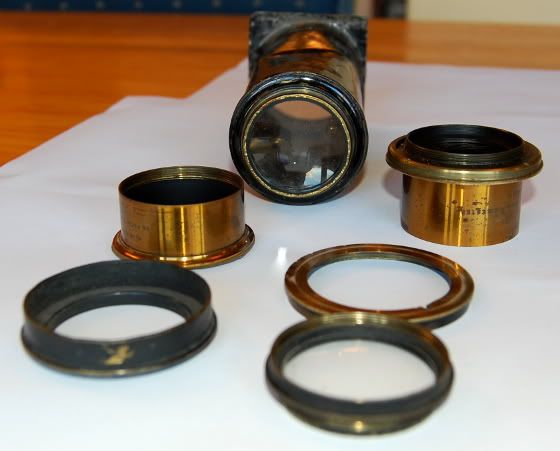
And finally, here is a closeup of the front element up against the rear element. I suppose that I will have to use a small jewelers torch to un-solder the tube and clean up the threads underneath, although I am hesitant to apply too much heat as the glass elements cannot be removed first.  If I can't safely remove the tube, I will have to figure out the focal length and make an adapter to hold it by the rear plate... If I can't safely remove the tube, I will have to figure out the focal length and make an adapter to hold it by the rear plate...
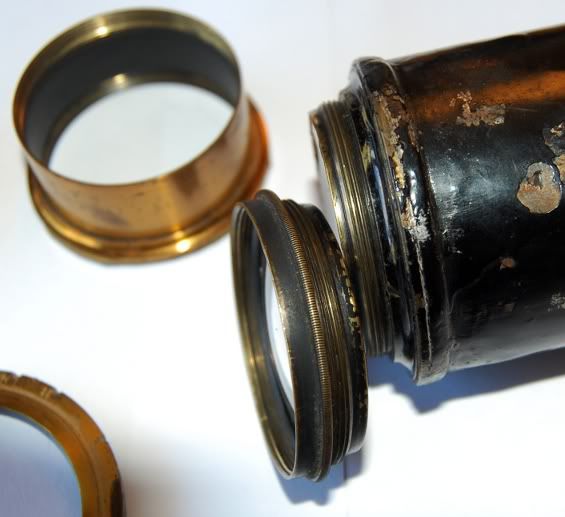
Now, if you are like me, my first question was "How old is it?" 
I did some research, and found the "Taylor, Taylor & Hobson" entry in the Lens Collector's Vade Mecum (07/05/2001 edition). There is some interesting information in there, such as this being one of TTH's first lenses, about how iris diaphragms were optional extras (the standard lenses having Waterhouse stops), and about TTH's transition to be called "Cooke Optics" - a name many here will recognize. Here are a few excerpts:
| Vade Mecum wrote: |
| Production initially could not have been large and the brass RR series has real scarcity in this field. |
| Vade Mecum wrote: |
Rapid Rectilinear (RR) with iris diaphragm f8.0 to cover 40-50�.
It was offered in 1/4, 1/2, 1/1 plate sizes and was seen at No 1,28x with Waterhouse stops.
Sharp & Hitchmough in 1889 listed it as 5.0in for 1/4plate, 7.0in for 1/2plate, 9.0in for 8x5in, 11in for 1/1plate,
13in for 10x8in, 16in for 12x10in, 18in for 15x12, 24in for 18x16in, and 30in for 22x20in. and suggested 13in for
10x8, and show lens serial No730 in the engraving. They were made with either Waterhouse stops or iris as
an extra, and the iris had a black band enamelled in the control ring. The iris design has not been examined
but at No580x it uses a raised band very like the Beck design of the period.
Serial numbers noted include: No 580x, 11,37x.
Some seem to be engraved "Landscape Lens".
Fig 019 002 TTH RR's (l) 7in for 1/2pl with stops at No1287; (r) 9.2in for 8x5in No5800 with iris. |
The VM also has this text:
| Vade Mecum wrote: |
A rather imaginative Table of chronology might be:
1886 onwards, RR lenses from possibly No100- at least No16,858 and more likely to 20,000 or so by a statement in 1892. (See 'threads' below.)
1895 say No100 for Cooke lenses: ie. a new series was begun.
...etc... |
The serial number of mine is 73xx, where the "xx" appears to be "06", but is only partially engraved on the left side of each digit. So it could be "7306", or it could be something else... Either way, a 73xx serial number would put it less than half way through the production range bounded by 1886 and 1892, so this is probably a late 1880s lens!  120+ years old! 120+ years old!  
I also found a post here on the forum, where Klaus (kds315*) was showing a similar lens. While there are a few passing references to the TTH RR lenses on the internet, Klaus is pretty much the only person to have posted photos. 
http://forum.mflenses.com/taylor-7-rapid-rectilinear-lens-on-a-dslr-t22838.html
So now that we know a bit more, does anyone have any ideas as to the purpose of the homemade addition?  My first guess would be for a magic lantern adaptation... but I don't have any strong reasons to think this, other than that it is appropriately old, and the small mount plate doesn't seem sturdy enough for general purpose camera use. My first guess would be for a magic lantern adaptation... but I don't have any strong reasons to think this, other than that it is appropriately old, and the small mount plate doesn't seem sturdy enough for general purpose camera use. 
_________________
Sigma DP1, Nikon D40 (hers  ), Polaroid x530, Pentax P30t, Pentax P50, (P30t/P50 K-A to Nikon F body mount conversion) ), Polaroid x530, Pentax P30t, Pentax P50, (P30t/P50 K-A to Nikon F body mount conversion)
Nikon: 18-55/3.5-5.6 "G ED II DX" (F) Soligor: 28/2.8 (FL->F converted), 135/3.5 (F), 3x TC (F, modified) Kalimar: 28-85/3.5 (F)
Vivitar: 70-210/2.8-4.0 Version 3 (F), Tele 500/6.3 Preset (F), 19/3.8 (F) Minolta: 300/5.6 (SR/MC/MD pending F conversion)
Tamron: 28/2.8 (Adaptall) Panagor: 28/2.5 (FD) Aetna: 300/5.6 (F) Osawa: MC 28/2.8 (F)
Vintage Lenses: Dallmeyer: 1940s A.M. 14in 356mm f4 (ULF->M42) 1930s Adon Telephoto Taylor, Taylor & Hobson: 1880s Rapid Rectilinear 8 1/2 x 6 1/2 11.31in f/8 (LF->?)
Parts Lenses: Nikon 35-135/3.5-4.5 (F), Sigma 70-210/4.5 (F), Nikon 50/1.8 Series E (F)
Last edited by Scheimpflug on Fri Jul 16, 2010 1:41 am; edited 1 time in total |
|
| Back to top |
|
 |
Farside


Joined: 01 Sep 2007
Posts: 6549
Location: Ireland
Expire: 2013-12-27
|
 Posted: Tue Jul 13, 2010 11:52 am Post subject: Posted: Tue Jul 13, 2010 11:52 am Post subject: |
 |
|
Farside wrote:
Deduct the length of the extension tube from the stated focal length and see what's left - it might be a clue as to what class of camera (if any) it was adapted to fit.
_________________
Dave - Moderator
Camera Fiend and Biograph Operator
If I wanted soot and whitewash I'd be a chimney sweep and house painter.
The Lenses of Farside (click)
BUY FRESH FOMAPAN TO HELP KEEP THE FACTORY ALIVE ---
Foma Campaign topic -
http://forum.mflenses.com/foma-campaign-t55443.html
FOMAPAN on forum -
http://www.mflenses.com/fs.php?sw=Fomapan
Webshop EU
http://www.fomafoto.com/ |
|
| Back to top |
|
 |
Scheimpflug


Joined: 06 Feb 2010
Posts: 1888
Location: New Zealand / USA
Expire: 2011-11-18
|
 Posted: Tue Jul 13, 2010 12:03 pm Post subject: Posted: Tue Jul 13, 2010 12:03 pm Post subject: |
 |
|
Scheimpflug wrote:
| Farside wrote: |
| Deduct the length of the extension tube from the stated focal length and see what's left - it might be a clue as to what class of camera (if any) it was adapted to fit. |
From the square flange to the place where the tube & lens join measures at 124mm (4 7/8") in length. So we have 11.31 - 4.875 = 6.435 inches (163.449 mm). That's still a considerable distance! 
_________________
Sigma DP1, Nikon D40 (hers  ), Polaroid x530, Pentax P30t, Pentax P50, (P30t/P50 K-A to Nikon F body mount conversion) ), Polaroid x530, Pentax P30t, Pentax P50, (P30t/P50 K-A to Nikon F body mount conversion)
Nikon: 18-55/3.5-5.6 "G ED II DX" (F) Soligor: 28/2.8 (FL->F converted), 135/3.5 (F), 3x TC (F, modified) Kalimar: 28-85/3.5 (F)
Vivitar: 70-210/2.8-4.0 Version 3 (F), Tele 500/6.3 Preset (F), 19/3.8 (F) Minolta: 300/5.6 (SR/MC/MD pending F conversion)
Tamron: 28/2.8 (Adaptall) Panagor: 28/2.5 (FD) Aetna: 300/5.6 (F) Osawa: MC 28/2.8 (F)
Vintage Lenses: Dallmeyer: 1940s A.M. 14in 356mm f4 (ULF->M42) 1930s Adon Telephoto Taylor, Taylor & Hobson: 1880s Rapid Rectilinear 8 1/2 x 6 1/2 11.31in f/8 (LF->?)
Parts Lenses: Nikon 35-135/3.5-4.5 (F), Sigma 70-210/4.5 (F), Nikon 50/1.8 Series E (F) |
|
| Back to top |
|
 |
Nesster


Joined: 24 Apr 2008
Posts: 5883
Location: NJ, USA
Expire: 2014-02-20
|
 Posted: Tue Jul 13, 2010 1:22 pm Post subject: Posted: Tue Jul 13, 2010 1:22 pm Post subject: |
 |
|
Nesster wrote:
Beautiful, wonderful, excellent, I love it! Thank you for the vicarious adventure!
_________________
-Jussi
Camera photos
Print Photographica
|
|
| Back to top |
|
 |
Farside


Joined: 01 Sep 2007
Posts: 6549
Location: Ireland
Expire: 2013-12-27
|
 Posted: Tue Jul 13, 2010 5:06 pm Post subject: Posted: Tue Jul 13, 2010 5:06 pm Post subject: |
 |
|
Farside wrote:
| Scheimpflug wrote: |
| Farside wrote: |
| Deduct the length of the extension tube from the stated focal length and see what's left - it might be a clue as to what class of camera (if any) it was adapted to fit. |
From the square flange to the place where the tube & lens join measures at 124mm (4 7/8") in length. So we have 11.31 - 4.875 = 6.435 inches (163.449 mm). That's still a considerable distance!  |
Ahah. Ignoring that it might be a human telescope contraption, that 163mm is within the standard lens range for 9x12cm, 4x5, and half-plate sizes. Depending on the maximum spread you could get from the rear of the tube, it might illuminate the above sizes on an early 20th C folder. It's possible it was somebody's attempt to get themselves a telephoto lens on a more basic, non-extension camera.
_________________
Dave - Moderator
Camera Fiend and Biograph Operator
If I wanted soot and whitewash I'd be a chimney sweep and house painter.
The Lenses of Farside (click)
BUY FRESH FOMAPAN TO HELP KEEP THE FACTORY ALIVE ---
Foma Campaign topic -
http://forum.mflenses.com/foma-campaign-t55443.html
FOMAPAN on forum -
http://www.mflenses.com/fs.php?sw=Fomapan
Webshop EU
http://www.fomafoto.com/ |
|
| Back to top |
|
 |
luisalegria


Joined: 07 Mar 2008
Posts: 6627
Location: San Francisco, USA
Expire: 2018-01-18
|
 Posted: Tue Jul 13, 2010 5:57 pm Post subject: Posted: Tue Jul 13, 2010 5:57 pm Post subject: |
 |
|
luisalegria wrote:
I think you've got it, its a long lens mounted for a smaller camera.
Smaller cameras, such as the usual 1900's 4x5 folders would likely not have the extension for such a long FL. Even now people sell extension tube mountings or extension bellows for view cameras for exactly this purpose.
The only problem I see is the lack of a shutter, which may not be much of a hardship as this thing was probably used at small stops with long exposures.
It could also have been intended for a focal-plane shutter reflex camera like the Graphics.
_________________
I like Pentax DSLR's, Exaktas, M42 bodies of all kinds, strange and cheap Japanese lenses, and am dabbling in medium format/Speed Graphic work. |
|
| Back to top |
|
 |
nemesis101


Joined: 25 Mar 2008
Posts: 2050
Location: Oregon USA
Expire: 2015-01-22
|
 Posted: Tue Jul 13, 2010 7:03 pm Post subject: Posted: Tue Jul 13, 2010 7:03 pm Post subject: |
 |
|
nemesis101 wrote:
Am I alone in imagining a forum similar to our own (but conducted via mail or telegraph) discussing a member's home-brew success at 'rescuing' a 20 year old 1880s lens and putting it to good use on their equivalent of a Canon 5D MKll, boasting how 'old lenses can be put to good uses even in this modern age'?
lol
Doug.
_________________
Lenses and cameras:
Amateurs worry about equipment
Pros worry about money,
Masters worry about light. |
|
| Back to top |
|
 |
luisalegria


Joined: 07 Mar 2008
Posts: 6627
Location: San Francisco, USA
Expire: 2018-01-18
|
 Posted: Tue Jul 13, 2010 7:58 pm Post subject: Posted: Tue Jul 13, 2010 7:58 pm Post subject: |
 |
|
luisalegria wrote:
Hi Doug,
You don't need to imagine, people have been doing this stuff since photgraphy began.
We have seen plenty of remounted LF lenses for Leicas and Exaktas for instance.
There were plenty of articles on old photo magazines on remounting lenses on different equipment.
_________________
I like Pentax DSLR's, Exaktas, M42 bodies of all kinds, strange and cheap Japanese lenses, and am dabbling in medium format/Speed Graphic work. |
|
| Back to top |
|
 |
kds315*


Joined: 12 Mar 2008
Posts: 16541
Location: Weinheim, Germany
Expire: 2021-03-09
|
 Posted: Tue Jul 13, 2010 9:37 pm Post subject: Posted: Tue Jul 13, 2010 9:37 pm Post subject: |
 |
|
kds315* wrote:
Your lens is pretty similar to mine (but mine has 6.94" = 176mm focal length). On your lens it reads focal length equals 11.31" = 287mm focal length, so at infinity you need your sensor to away from the center of the lens by that amount. If your lens is say 100mm long, that would then be roughly 287mm - 50mm = 237mm. If you want to use it on a Nikon DSLR, the register is 46.5mm, so you would need a tube of 237mm - 46.5mm = 190.5mm length. Obviously that camera your lens was used on was a larger format camera which much larger register length since your tube is about 124mm long. So it you want to bring it to good use, you would even need a longer tube - but you don't have focusing yet! Focusing closer than infinity needs and even longer tube, so it would be best to fit between your lens+tube a suitable focusing helicoid. There is a long focus helicoid with front and rear M42 threads, which extends between 35 and 95mm if I remember correctly, so for infinity you would need 237mm - 124mm - 35mm = 78mm additional tube (for that Nikon example). It is a bit incoirrect as you would have to remove that square flange at the end, thus losing some length or leave it and use it to attach a suitable long tube with rear M42 mount, that would fit the focusing helicoid. I hope that was clear to understand the principle... 
_________________
Klaus - Admin
"S'il vient a point, me souviendra" [Thomas Bohier (1460-1523)]
http://www.macrolenses.de for macro and special lens info
http://www.pbase.com/kds315/uv_photos for UV Images and lens/filter info
https://www.flickr.com/photos/kds315/albums my albums using various lenses
http://photographyoftheinvisibleworld.blogspot.com/ my UV BLOG
http://www.travelmeetsfood.com/blog Food + Travel BLOG
https://galeriafotografia.com Architecture + Drone photography
Currently most FAV lens(es):
X80QF f3.2/80mm
Hypergon f11/26mm
ELCAN UV f5.6/52mm
Zeiss UV-Planar f4/60mm
Zeiss UV-Planar f2/62mm
Lomo Уфар-12 f2.5/41mm
Lomo Зуфар-2 f4.0/350mm
Lomo ZIKAR-1A f1.2/100mm
Nikon UV Nikkor f4.5/105mm
Zeiss UV-Sonnar f4.3/105mm
CERCO UV-VIS-NIR f1.8/45mm
CERCO UV-VIS-NIR f4.1/94mm
CERCO UV-VIS-NIR f2.8/100mm
Steinheil Quarzobjektiv f1.8/50mm
Pentax Quartz Takumar f3.5/85mm
Carl Zeiss Jena UV-Objektiv f4/60mm
NYE OPTICAL Lyman-Alpha II f1.1/90mm
NYE OPTICAL Lyman-Alpha I f2.8/200mm
COASTAL OPTICS f4/60mm UV-VIS-IR Apo
COASTAL OPTICS f4.5/105mm UV-Micro-Apo
Pentax Ultra-Achromatic Takumar f4.5/85mm
Pentax Ultra-Achromatic Takumar f5.6/300mm
Rodenstock UV-Rodagon f5.6/60mm + 105mm + 150mm
|
|
| Back to top |
|
 |
Scheimpflug


Joined: 06 Feb 2010
Posts: 1888
Location: New Zealand / USA
Expire: 2011-11-18
|
 Posted: Wed Jul 14, 2010 1:55 am Post subject: Posted: Wed Jul 14, 2010 1:55 am Post subject: |
 |
|
Scheimpflug wrote:
| Farside wrote: |
| Ahah. Ignoring that it might be a human telescope contraption, that 163mm is within the standard lens range for 9x12cm, 4x5, and half-plate sizes. Depending on the maximum spread you could get from the rear of the tube, it might illuminate the above sizes on an early 20th C folder. It's possible it was somebody's attempt to get themselves a telephoto lens on a more basic, non-extension camera. |
| luisalegria wrote: |
I think you've got it, its a long lens mounted for a smaller camera.
Smaller cameras, such as the usual 1900's 4x5 folders would likely not have the extension for such a long FL. Even now people sell extension tube mountings or extension bellows for view cameras for exactly this purpose. |
Thanks Dave & Luis, that's an interesting thought!
Using a sheet of paper and a window with the curtains drawn around the lens, I made a rough measure of the image circle produced when focused on infinity and found it to be ~115mm (4.5") in diameter where the vignetting starts. Solving for an isosceles right triangle with a hypotenuse of 115mm, we end up with an 81.32x81.32mm (3 1/4" x 3 1/4") square as the largest coverage area without vignetting.
Granted, we can't necessarily assume that the experiment "worked"... or that it didn't vignette on its transplanted camera.  On a related note, once an intended format is determined, I suppose we have no real way of knowing whether it was used for a camera, or an enlarger - perhaps even the oil-burning horizontal type? This lens and tube combination doesn't have any slip joints, rack&pinions, or helicoids to focus it, so I can only assume that it was bellows mounted or that the focusing mechanism was part of the unit it attached to. On a related note, once an intended format is determined, I suppose we have no real way of knowing whether it was used for a camera, or an enlarger - perhaps even the oil-burning horizontal type? This lens and tube combination doesn't have any slip joints, rack&pinions, or helicoids to focus it, so I can only assume that it was bellows mounted or that the focusing mechanism was part of the unit it attached to.
Do either of you happen to have any photos of these early folding cameras, perhaps even ones with the extension tubes or extension bellows you have mentioned? Also, do you know if any of these cameras had lenses mounting via removable plates? 
_________________
Sigma DP1, Nikon D40 (hers  ), Polaroid x530, Pentax P30t, Pentax P50, (P30t/P50 K-A to Nikon F body mount conversion) ), Polaroid x530, Pentax P30t, Pentax P50, (P30t/P50 K-A to Nikon F body mount conversion)
Nikon: 18-55/3.5-5.6 "G ED II DX" (F) Soligor: 28/2.8 (FL->F converted), 135/3.5 (F), 3x TC (F, modified) Kalimar: 28-85/3.5 (F)
Vivitar: 70-210/2.8-4.0 Version 3 (F), Tele 500/6.3 Preset (F), 19/3.8 (F) Minolta: 300/5.6 (SR/MC/MD pending F conversion)
Tamron: 28/2.8 (Adaptall) Panagor: 28/2.5 (FD) Aetna: 300/5.6 (F) Osawa: MC 28/2.8 (F)
Vintage Lenses: Dallmeyer: 1940s A.M. 14in 356mm f4 (ULF->M42) 1930s Adon Telephoto Taylor, Taylor & Hobson: 1880s Rapid Rectilinear 8 1/2 x 6 1/2 11.31in f/8 (LF->?)
Parts Lenses: Nikon 35-135/3.5-4.5 (F), Sigma 70-210/4.5 (F), Nikon 50/1.8 Series E (F) |
|
| Back to top |
|
 |
Scheimpflug


Joined: 06 Feb 2010
Posts: 1888
Location: New Zealand / USA
Expire: 2011-11-18
|
 Posted: Wed Jul 14, 2010 1:56 am Post subject: Posted: Wed Jul 14, 2010 1:56 am Post subject: |
 |
|
Scheimpflug wrote:
| nemesis101 wrote: |
Am I alone in imagining a forum similar to our own (but conducted via mail or telegraph) discussing a member's home-brew success at 'rescuing' a 20 year old 1880s lens and putting it to good use on their equivalent of a Canon 5D MKll, boasting how 'old lenses can be put to good uses even in this modern age'?
lol |
Haha!  If I lived in that age, I would be one of those guys, that's for sure. If I lived in that age, I would be one of those guys, that's for sure. 
I wonder what these lenses cost when new, and I wonder how much of their value they retained over time, before they started becoming collectors items? Say in the 1920s?
_________________
Sigma DP1, Nikon D40 (hers  ), Polaroid x530, Pentax P30t, Pentax P50, (P30t/P50 K-A to Nikon F body mount conversion) ), Polaroid x530, Pentax P30t, Pentax P50, (P30t/P50 K-A to Nikon F body mount conversion)
Nikon: 18-55/3.5-5.6 "G ED II DX" (F) Soligor: 28/2.8 (FL->F converted), 135/3.5 (F), 3x TC (F, modified) Kalimar: 28-85/3.5 (F)
Vivitar: 70-210/2.8-4.0 Version 3 (F), Tele 500/6.3 Preset (F), 19/3.8 (F) Minolta: 300/5.6 (SR/MC/MD pending F conversion)
Tamron: 28/2.8 (Adaptall) Panagor: 28/2.5 (FD) Aetna: 300/5.6 (F) Osawa: MC 28/2.8 (F)
Vintage Lenses: Dallmeyer: 1940s A.M. 14in 356mm f4 (ULF->M42) 1930s Adon Telephoto Taylor, Taylor & Hobson: 1880s Rapid Rectilinear 8 1/2 x 6 1/2 11.31in f/8 (LF->?)
Parts Lenses: Nikon 35-135/3.5-4.5 (F), Sigma 70-210/4.5 (F), Nikon 50/1.8 Series E (F) |
|
| Back to top |
|
 |
Scheimpflug


Joined: 06 Feb 2010
Posts: 1888
Location: New Zealand / USA
Expire: 2011-11-18
|
 Posted: Wed Jul 14, 2010 2:00 am Post subject: Posted: Wed Jul 14, 2010 2:00 am Post subject: |
 |
|
Scheimpflug wrote:
| kds315* wrote: |
Your lens is pretty similar to mine (but mine has 6.94" = 176mm focal length). On your lens it reads focal length equals 11.31" = 287mm focal length, so at infinity you need your sensor to away from the center of the lens by that amount. If your lens is say 100mm long, that would then be roughly 287mm - 50mm = 237mm. If you want to use it on a Nikon DSLR, the register is 46.5mm, so you would need a tube of 237mm - 46.5mm = 190.5mm length. Obviously that camera your lens was used on was a larger format camera which much larger register length since your tube is about 124mm long. So it you want to bring it to good use, you would even need a longer tube - but you don't have focusing yet! Focusing closer than infinity needs and even longer tube, so it would be best to fit between your lens+tube a suitable focusing helicoid. There is a long focus helicoid with front and rear M42 threads, which extends between 35 and 95mm if I remember correctly, so for infinity you would need 237mm - 124mm - 35mm = 78mm additional tube (for that Nikon example). It is a bit incoirrect as you would have to remove that square flange at the end, thus losing some length or leave it and use it to attach a suitable long tube with rear M42 mount, that would fit the focusing helicoid. I hope that was clear to understand the principle...  |
Perfectly clear, and thanks for the thorough explanation! 
The focusing helicoids are beyond my budget, but I do have a Nikon PB-3 bellows to use for testing. It has an extension range of 33 to 142mm, so based on your calculations, that should be an adequate length. I could even add additional extension tubes if necessary to bring the focus points into a more usable range. 78mm - 33mm = 45mm, and I have a pair of "Nikon E" and "Nikon PK-3" extension tubes here which measure at 41mm when stacked. 
Also, if your lens is 6.94" (176mm) focal length, I suppose yours is quite a bit less awkward to mount on a modern camera? Do you happen to have any pictures of yours and the extension/focusing method you used?
Thanks again. 
_________________
Sigma DP1, Nikon D40 (hers  ), Polaroid x530, Pentax P30t, Pentax P50, (P30t/P50 K-A to Nikon F body mount conversion) ), Polaroid x530, Pentax P30t, Pentax P50, (P30t/P50 K-A to Nikon F body mount conversion)
Nikon: 18-55/3.5-5.6 "G ED II DX" (F) Soligor: 28/2.8 (FL->F converted), 135/3.5 (F), 3x TC (F, modified) Kalimar: 28-85/3.5 (F)
Vivitar: 70-210/2.8-4.0 Version 3 (F), Tele 500/6.3 Preset (F), 19/3.8 (F) Minolta: 300/5.6 (SR/MC/MD pending F conversion)
Tamron: 28/2.8 (Adaptall) Panagor: 28/2.5 (FD) Aetna: 300/5.6 (F) Osawa: MC 28/2.8 (F)
Vintage Lenses: Dallmeyer: 1940s A.M. 14in 356mm f4 (ULF->M42) 1930s Adon Telephoto Taylor, Taylor & Hobson: 1880s Rapid Rectilinear 8 1/2 x 6 1/2 11.31in f/8 (LF->?)
Parts Lenses: Nikon 35-135/3.5-4.5 (F), Sigma 70-210/4.5 (F), Nikon 50/1.8 Series E (F) |
|
| Back to top |
|
 |
fish4570


Joined: 06 Jan 2010
Posts: 4514
Location: At the confluence of the Locust Fork of the Warrior River and Black Creek, Alabama
Expire: 2012-03-21
|
 Posted: Wed Jul 14, 2010 2:38 am Post subject: Posted: Wed Jul 14, 2010 2:38 am Post subject: |
 |
|
fish4570 wrote:
You guys are making my head hurt ... 
_________________
Paul
I chase Light
http://blackcreekjournal.blogspot.com/ |
|
| Back to top |
|
 |
luisalegria


Joined: 07 Mar 2008
Posts: 6627
Location: San Francisco, USA
Expire: 2018-01-18
|
 Posted: Wed Jul 14, 2010 3:37 am Post subject: Posted: Wed Jul 14, 2010 3:37 am Post subject: |
 |
|
luisalegria wrote:
Something like this maybe -
http://www.stronghorses.com/bstrong/cameras/cam_premo3.htm
or this -
http://members.papadocs.com/buttons49/cameramuseum/code/subpages/666.htm
or maybe even this -
http://www.flickr.com/photos/89864432@N00/4274453901/in/pool-camerapedia
There were versions these that took lensboards.
Its also possible that the rear flange may have been intended to be hooked over a square lens mount and not necessarily used as a lens board.
_________________
I like Pentax DSLR's, Exaktas, M42 bodies of all kinds, strange and cheap Japanese lenses, and am dabbling in medium format/Speed Graphic work. |
|
| Back to top |
|
 |
cooltouch


Joined: 15 Jan 2009
Posts: 9097
Location: Houston, Texas
|
 Posted: Wed Jul 14, 2010 4:20 am Post subject: Posted: Wed Jul 14, 2010 4:20 am Post subject: |
 |
|
cooltouch wrote:
It's an interesting old lens, for sure, and I'd love to see some large format shots taken with it.
Sounds to me like you have quite a bit of data as to format size. Whenever I've had a question about the size of a lens's image circle, I just hold the lens up to a white wall and point it toward a well-lit window, then move it back and forth toward the wall until the projected image is sharp. At that point, you can either guestimate or measure the image circle. Adjust your estimates as necessary if you think you'll need room for movements. No high-falutin' theoretical calculatin' necessary.
_________________
Michael
My Gear List: http://michaelmcbroom.com/photo/gear.html
My Gallery: http://michaelmcbroom.com/gallery3/index.php/
My Flickr Page: https://www.flickr.com/photos/11308754@N08/albums
My Music: https://soundcloud.com/michaelmcbroom/albums
My Blog: http://michaelmcbroom.com/blogistan/ |
|
| Back to top |
|
 |
kds315*


Joined: 12 Mar 2008
Posts: 16541
Location: Weinheim, Germany
Expire: 2021-03-09
|
 Posted: Wed Jul 14, 2010 7:52 am Post subject: Posted: Wed Jul 14, 2010 7:52 am Post subject: |
 |
|
kds315* wrote:
| Scheimpflug wrote: |
| kds315* wrote: |
Your lens is pretty similar to mine (but mine has 6.94" = 176mm focal length). On your lens it reads focal length equals 11.31" = 287mm focal length, so at infinity you need your sensor to away from the center of the lens by that amount. If your lens is say 100mm long, that would then be roughly 287mm - 50mm = 237mm. If you want to use it on a Nikon DSLR, the register is 46.5mm, so you would need a tube of 237mm - 46.5mm = 190.5mm length. Obviously that camera your lens was used on was a larger format camera which much larger register length since your tube is about 124mm long. So it you want to bring it to good use, you would even need a longer tube - but you don't have focusing yet! Focusing closer than infinity needs and even longer tube, so it would be best to fit between your lens+tube a suitable focusing helicoid. There is a long focus helicoid with front and rear M42 threads, which extends between 35 and 95mm if I remember correctly, so for infinity you would need 237mm - 124mm - 35mm = 78mm additional tube (for that Nikon example). It is a bit incoirrect as you would have to remove that square flange at the end, thus losing some length or leave it and use it to attach a suitable long tube with rear M42 mount, that would fit the focusing helicoid. I hope that was clear to understand the principle...  |
Perfectly clear, and thanks for the thorough explanation! 
The focusing helicoids are beyond my budget, but I do have a Nikon PB-3 bellows to use for testing. It has an extension range of 33 to 142mm, so based on your calculations, that should be an adequate length. I could even add additional extension tubes if necessary to bring the focus points into a more usable range. 78mm - 33mm = 45mm, and I have a pair of "Nikon E" and "Nikon PK-3" extension tubes here which measure at 41mm when stacked. 
Also, if your lens is 6.94" (176mm) focal length, I suppose yours is quite a bit less awkward to mount on a modern camera? Do you happen to have any pictures of yours and the extension/focusing method you used?
Thanks again.  |
Well, a bellows will serve you well for sure to try it out.
I had a look but only found two other shots from that series I made, straight from the cam uncropped...
Flower bouquet close up

Castle detail night shot

_________________
Klaus - Admin
"S'il vient a point, me souviendra" [Thomas Bohier (1460-1523)]
http://www.macrolenses.de for macro and special lens info
http://www.pbase.com/kds315/uv_photos for UV Images and lens/filter info
https://www.flickr.com/photos/kds315/albums my albums using various lenses
http://photographyoftheinvisibleworld.blogspot.com/ my UV BLOG
http://www.travelmeetsfood.com/blog Food + Travel BLOG
https://galeriafotografia.com Architecture + Drone photography
Currently most FAV lens(es):
X80QF f3.2/80mm
Hypergon f11/26mm
ELCAN UV f5.6/52mm
Zeiss UV-Planar f4/60mm
Zeiss UV-Planar f2/62mm
Lomo Уфар-12 f2.5/41mm
Lomo Зуфар-2 f4.0/350mm
Lomo ZIKAR-1A f1.2/100mm
Nikon UV Nikkor f4.5/105mm
Zeiss UV-Sonnar f4.3/105mm
CERCO UV-VIS-NIR f1.8/45mm
CERCO UV-VIS-NIR f4.1/94mm
CERCO UV-VIS-NIR f2.8/100mm
Steinheil Quarzobjektiv f1.8/50mm
Pentax Quartz Takumar f3.5/85mm
Carl Zeiss Jena UV-Objektiv f4/60mm
NYE OPTICAL Lyman-Alpha II f1.1/90mm
NYE OPTICAL Lyman-Alpha I f2.8/200mm
COASTAL OPTICS f4/60mm UV-VIS-IR Apo
COASTAL OPTICS f4.5/105mm UV-Micro-Apo
Pentax Ultra-Achromatic Takumar f4.5/85mm
Pentax Ultra-Achromatic Takumar f5.6/300mm
Rodenstock UV-Rodagon f5.6/60mm + 105mm + 150mm
|
|
| Back to top |
|
 |
cooltouch


Joined: 15 Jan 2009
Posts: 9097
Location: Houston, Texas
|
|
| Back to top |
|
 |
Scheimpflug


Joined: 06 Feb 2010
Posts: 1888
Location: New Zealand / USA
Expire: 2011-11-18
|
 Posted: Fri Jul 16, 2010 1:25 am Post subject: Posted: Fri Jul 16, 2010 1:25 am Post subject: |
 |
|
Scheimpflug wrote:
| kds315* wrote: |
| Scheimpflug wrote: |
The focusing helicoids are beyond my budget, but I do have a Nikon PB-3 bellows to use for testing. It has an extension range of 33 to 142mm, so based on your calculations, that should be an adequate length. I could even add additional extension tubes if necessary to bring the focus points into a more usable range. 78mm - 33mm = 45mm, and I have a pair of "Nikon E" and "Nikon PK-3" extension tubes here which measure at 41mm when stacked.  |
Well, a bellows will serve you well for sure to try it out. |
So I dug through my box of parts to figure out a temporary mount, and ended up with this: 
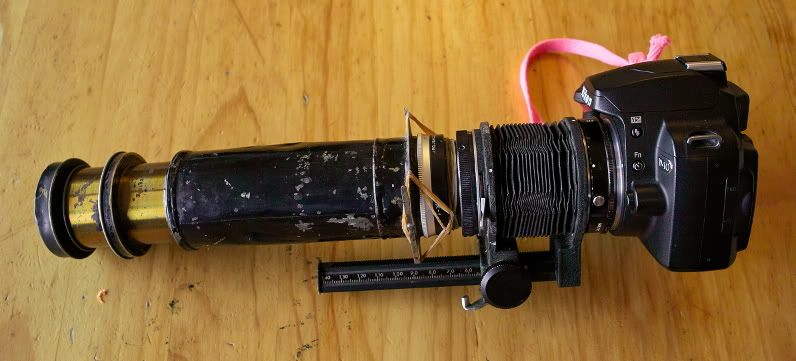
From right to left, we have:
* D40
* Nikon "E" short extension tube
* Nikon PB-3 Bellows
* Nikon T-mount shell, with the M42x0.75 insert replaced with a M42x1.00 insert that was removed from a M42 Vivitar 2x TC
* The remainder of the Vivitar 2x TC, with the optics removed, pieces swapped around, setscrews reversed to lock outward instead of inward, etc. With a single layer of tape around it, this assembly fits snugly into the end of the lens extension tube. 
* Some rubber bands for safety / peace-of-mind 
* The TTH RR lens on its extension tube
It's certainly not ideal, but it should be enough to get me by for a bit to do some basic testing. I will have to think some more about what I want to do with regards to removing the soldered on tube, as it has become apparent that even if I remove it, I will just have to add its equivalent back on.  And if I have to add 160+mm of "real" extension tubes, the weight is going to add up in a hurry! And if I have to add 160+mm of "real" extension tubes, the weight is going to add up in a hurry! 
If anything, I suppose the best setup would be to have all of the extensions up against the camera body, with the bellows right at the back of the lens. This would keep the lens weight down, making it easier to focus and also less susceptible to creep when pointing up or down. It would also put the focus control close to the aperture, and further out where you could better steady the assembly when using it. 
_________________
Sigma DP1, Nikon D40 (hers  ), Polaroid x530, Pentax P30t, Pentax P50, (P30t/P50 K-A to Nikon F body mount conversion) ), Polaroid x530, Pentax P30t, Pentax P50, (P30t/P50 K-A to Nikon F body mount conversion)
Nikon: 18-55/3.5-5.6 "G ED II DX" (F) Soligor: 28/2.8 (FL->F converted), 135/3.5 (F), 3x TC (F, modified) Kalimar: 28-85/3.5 (F)
Vivitar: 70-210/2.8-4.0 Version 3 (F), Tele 500/6.3 Preset (F), 19/3.8 (F) Minolta: 300/5.6 (SR/MC/MD pending F conversion)
Tamron: 28/2.8 (Adaptall) Panagor: 28/2.5 (FD) Aetna: 300/5.6 (F) Osawa: MC 28/2.8 (F)
Vintage Lenses: Dallmeyer: 1940s A.M. 14in 356mm f4 (ULF->M42) 1930s Adon Telephoto Taylor, Taylor & Hobson: 1880s Rapid Rectilinear 8 1/2 x 6 1/2 11.31in f/8 (LF->?)
Parts Lenses: Nikon 35-135/3.5-4.5 (F), Sigma 70-210/4.5 (F), Nikon 50/1.8 Series E (F) |
|
| Back to top |
|
 |
fish4570


Joined: 06 Jan 2010
Posts: 4514
Location: At the confluence of the Locust Fork of the Warrior River and Black Creek, Alabama
Expire: 2012-03-21
|
 Posted: Fri Jul 16, 2010 1:55 am Post subject: Posted: Fri Jul 16, 2010 1:55 am Post subject: |
 |
|
fish4570 wrote:
Woo-hoo! Tilt shift and everything! 
Hope you have some grand fun, and we get to look at the results.
Thanks for your shots, too, kds.
_________________
Paul
I chase Light
http://blackcreekjournal.blogspot.com/ |
|
| Back to top |
|
 |
mo


Joined: 27 Aug 2009
Posts: 8982
Location: Australia
Expire: 2016-07-30
|
 Posted: Fri Jul 16, 2010 10:42 am Post subject: Posted: Fri Jul 16, 2010 10:42 am Post subject: |
 |
|
mo wrote:
Don't poke the persons eye out if you take a portrait...  awesome ingenuity!!...bravo. awesome ingenuity!!...bravo.
_________________
Moira, Moderator 
Fuji XE-1,Pentax K-01,Panasonic G1,Panasonic G5,Pentax MX
Ricoh Singlex TLS,KR-5,KR-5Super,XR-10
Lenses
Auto Rikenon's 55/1.4, 1.8, 2.8... 50/1.7 Takumar 2/58 Preset Takumar 2.8/105 Auto Takumar 2.2/55, 3.5/35 Super Takumar 1.8/55...Macro Takumar F4/50... CZJ Biotar ALU M42 2/58 CZJ Tessar ALU M42 2.8/50
CZJ DDR Flektogon Zebra M42 2.8/35 CZJ Pancolar M42 2/50 CZJ Pancolar Exakta 2/50
Auto Mamiya/Sekor 1.8/55 ...Auto Mamiya/Sekor 2/50 Auto Mamiya/Sekor 2.8/50 Auto Mamiya/Sekor 200/3.5 Tamron SP500/8 Tamron SP350/5.6 Tamron SP90/2.5
Primoplan 1.9/58 Primagon 4.5/35 Telemegor 5.5/150 Angenieux 3.5/28 Angenieux 3,5/135 Y 2
Canon FL 58/1.2,Canon FL85/1.8,Canon FL 100/3.5,Canon SSC 2.8/100 ,Konica AR 100/2.8, Nikkor P 105/2.5
|
|
| Back to top |
|
 |
Scheimpflug


Joined: 06 Feb 2010
Posts: 1888
Location: New Zealand / USA
Expire: 2011-11-18
|
 Posted: Fri Jul 16, 2010 11:34 am Post subject: Posted: Fri Jul 16, 2010 11:34 am Post subject: |
 |
|
Scheimpflug wrote:
| fish4570 wrote: |
Woo-hoo! Tilt shift and everything! 
Hope you have some grand fun, and we get to look at the results.
Thanks for your shots, too, kds. |
Oh, it's definitely not tilt/shift! It looks a bit that way in the photo because of the perspective, as I was pretty close to it with my DP1's 28mm lens. In reality, it's quite sturdy and very straight. There's no "give" anywhere except for a tiny bit of play in the bellows track.  In fact, it is sturdy enough that I've given some thought to just attaching a mount to the back of the tube semi-permanently. In fact, it is sturdy enough that I've given some thought to just attaching a mount to the back of the tube semi-permanently.
Samples are coming. 
| mo wrote: |
Don't poke the persons eye out if you take a portrait...  awesome ingenuity!!...bravo. awesome ingenuity!!...bravo. |
Haha. Yeah, that might actually be a possibility! With the bellows at full extension, the close focus point is just a bit short of 1 meter! 
It looks really funny off the camera though, with the brass and the rings at the front and the bellows at the rear, it's almost like a steampunk sci-fi martian ray gun. 
_________________
Sigma DP1, Nikon D40 (hers  ), Polaroid x530, Pentax P30t, Pentax P50, (P30t/P50 K-A to Nikon F body mount conversion) ), Polaroid x530, Pentax P30t, Pentax P50, (P30t/P50 K-A to Nikon F body mount conversion)
Nikon: 18-55/3.5-5.6 "G ED II DX" (F) Soligor: 28/2.8 (FL->F converted), 135/3.5 (F), 3x TC (F, modified) Kalimar: 28-85/3.5 (F)
Vivitar: 70-210/2.8-4.0 Version 3 (F), Tele 500/6.3 Preset (F), 19/3.8 (F) Minolta: 300/5.6 (SR/MC/MD pending F conversion)
Tamron: 28/2.8 (Adaptall) Panagor: 28/2.5 (FD) Aetna: 300/5.6 (F) Osawa: MC 28/2.8 (F)
Vintage Lenses: Dallmeyer: 1940s A.M. 14in 356mm f4 (ULF->M42) 1930s Adon Telephoto Taylor, Taylor & Hobson: 1880s Rapid Rectilinear 8 1/2 x 6 1/2 11.31in f/8 (LF->?)
Parts Lenses: Nikon 35-135/3.5-4.5 (F), Sigma 70-210/4.5 (F), Nikon 50/1.8 Series E (F) |
|
| Back to top |
|
 |
Scheimpflug


Joined: 06 Feb 2010
Posts: 1888
Location: New Zealand / USA
Expire: 2011-11-18
|
 Posted: Fri Jul 16, 2010 12:31 pm Post subject: Posted: Fri Jul 16, 2010 12:31 pm Post subject: |
 |
|
Scheimpflug wrote:
Ok, here's a challenge for those of you with trained eyes... or who like guessing. 
Three sample pictures, all taken with lenses which can be found in my signature, within minutes of each other using identical camera settings (aside from white balance, which I forgot to lock  ). An aperture of f/8 was used for each lens, which is wide open for the TTH RR and stopped down for the rest. They were then all cropped to the same approximate view and scaled by differing amounts to make the subjects equivalent sizes. No other adjustments or post processing was performed. ). An aperture of f/8 was used for each lens, which is wide open for the TTH RR and stopped down for the rest. They were then all cropped to the same approximate view and scaled by differing amounts to make the subjects equivalent sizes. No other adjustments or post processing was performed.
I made these shots handheld, so focus points are close, but probably not exact. These pictures were also taken though a window, so for what it is worth, they don't quite represent the "best possible" from each lens. 
Can anyone correctly identify the lens for each of the three pictures?  Feel free to elaborate with your answers, I would be interesting to hear the reasoning behind your choices. Feel free to elaborate with your answers, I would be interesting to hear the reasoning behind your choices. 
Sample A:
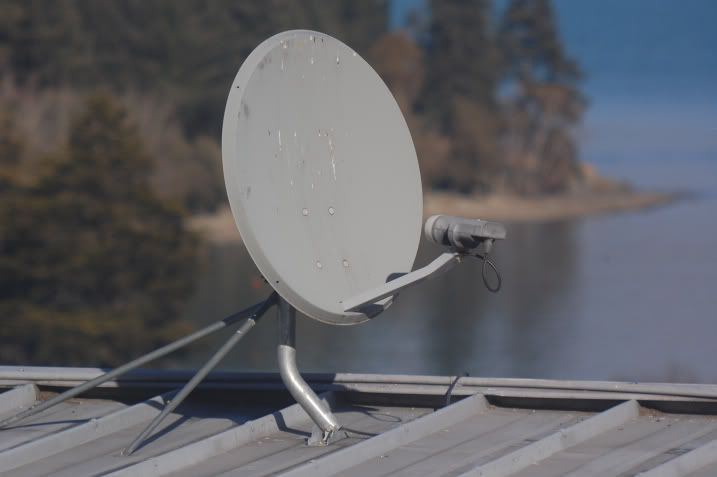
Sample B:
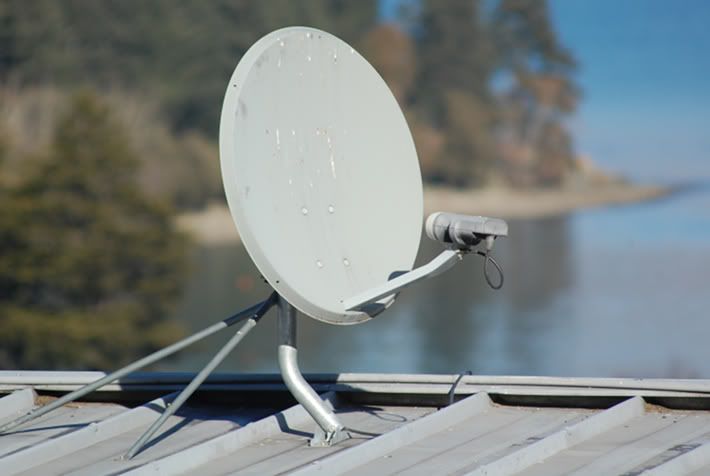
Sample C:
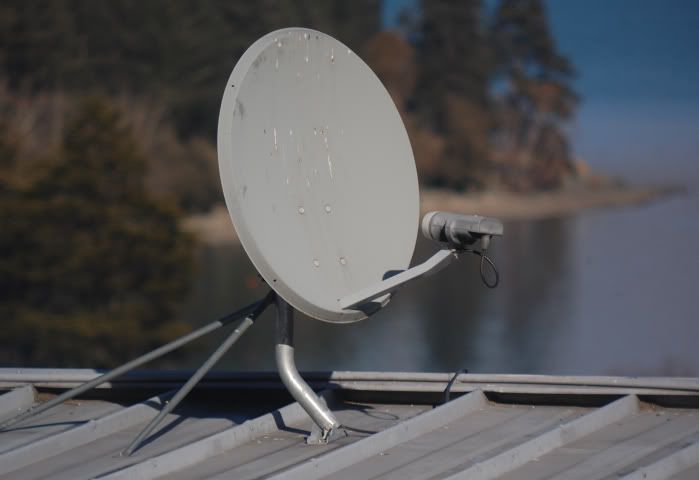
_________________
Sigma DP1, Nikon D40 (hers  ), Polaroid x530, Pentax P30t, Pentax P50, (P30t/P50 K-A to Nikon F body mount conversion) ), Polaroid x530, Pentax P30t, Pentax P50, (P30t/P50 K-A to Nikon F body mount conversion)
Nikon: 18-55/3.5-5.6 "G ED II DX" (F) Soligor: 28/2.8 (FL->F converted), 135/3.5 (F), 3x TC (F, modified) Kalimar: 28-85/3.5 (F)
Vivitar: 70-210/2.8-4.0 Version 3 (F), Tele 500/6.3 Preset (F), 19/3.8 (F) Minolta: 300/5.6 (SR/MC/MD pending F conversion)
Tamron: 28/2.8 (Adaptall) Panagor: 28/2.5 (FD) Aetna: 300/5.6 (F) Osawa: MC 28/2.8 (F)
Vintage Lenses: Dallmeyer: 1940s A.M. 14in 356mm f4 (ULF->M42) 1930s Adon Telephoto Taylor, Taylor & Hobson: 1880s Rapid Rectilinear 8 1/2 x 6 1/2 11.31in f/8 (LF->?)
Parts Lenses: Nikon 35-135/3.5-4.5 (F), Sigma 70-210/4.5 (F), Nikon 50/1.8 Series E (F) |
|
| Back to top |
|
 |
cheve

Joined: 31 Mar 2009
Posts: 182
Expire: 2011-12-06
|
 Posted: Fri Jul 16, 2010 1:03 pm Post subject: Posted: Fri Jul 16, 2010 1:03 pm Post subject: |
 |
|
cheve wrote:
I think it is the 3rd one - this one seems to be more saturated to my eye. From your post showing the disassemble lens, some of the glass element appears to have a yellow/brownish tint to it, I think the saturated look is a result of the tint. the lack of WB treatment for the three sample is a good hint in this case ( ok.. at least in my head)
cheers,
_________________
Adaptall-2: 17/3.5(51B),80-210/3.8-4(103A),60-300/3.8-5.4(23A) C/Y: CZ 35-70/3.4,RMC Tokian 80-200/4.5
EXk: Topcor Re Auto 35/2.8(broken),135/3.5, Steinheil Culminar 135/4.5 Leitz-R: 50/2,90/2,180/4,180/3.4,Angenieux 35-70/2.5-3.3
M42: pentacon 135/2.8,135/2.8(preset),Super-Takumar 55/1.8,Meyer-Optik 50/1.8 FD: Voigtlander 125/2.5 SL
K: smc 50/1.2, porst 55/1.2, Takumar(Bayonet) 135/2.5 Minolta: rokker 58/1.4,58/1.2 nikkon: Nikkor H Auto 300/4.5
OM: 21/2,21/3.5,28/3.5,50/1.2,300/4.5,500/8,35-70/3.6, viv 17/3.5,viv 28/1.9,viv 135/2.3
Rollei: Voigtlander Color-Ultron 55/1.4 AR T: Tele-Astranar 135/3.5
EF: 30/1.4(Sigma),50/1.8,28-70L,80-200L,24-105L,70-300DO,18-200OS(Sigma)
|
|
| Back to top |
|
 |
fish4570


Joined: 06 Jan 2010
Posts: 4514
Location: At the confluence of the Locust Fork of the Warrior River and Black Creek, Alabama
Expire: 2012-03-21
|
 Posted: Fri Jul 16, 2010 1:04 pm Post subject: Posted: Fri Jul 16, 2010 1:04 pm Post subject: |
 |
|
fish4570 wrote:
Oh, I know it's not tilt/shift, but it sure looks like it can boogy ... 
_________________
Paul
I chase Light
http://blackcreekjournal.blogspot.com/ |
|
| Back to top |
|
 |
Krisgage


Joined: 16 Mar 2009
Posts: 681
Location: Singapore
|
 Posted: Fri Jul 16, 2010 1:52 pm Post subject: Posted: Fri Jul 16, 2010 1:52 pm Post subject: |
 |
|
Krisgage wrote:
Cool set up !
Extension tubes and bellows work harmoniously with old brass lenses !
_________________
Photos and Lenses Journal
http://krisgage.livejournal.com |
|
| Back to top |
|
 |
|
|
